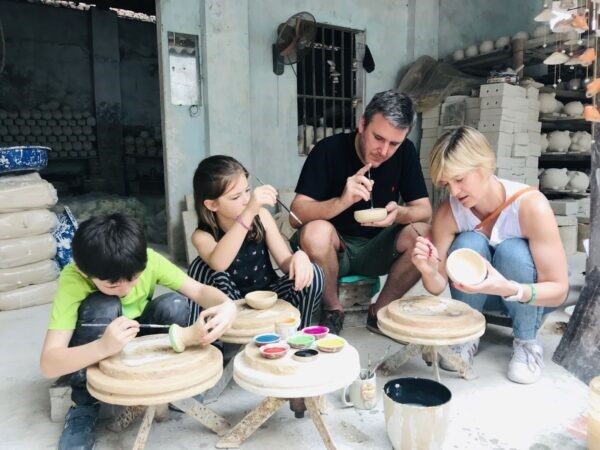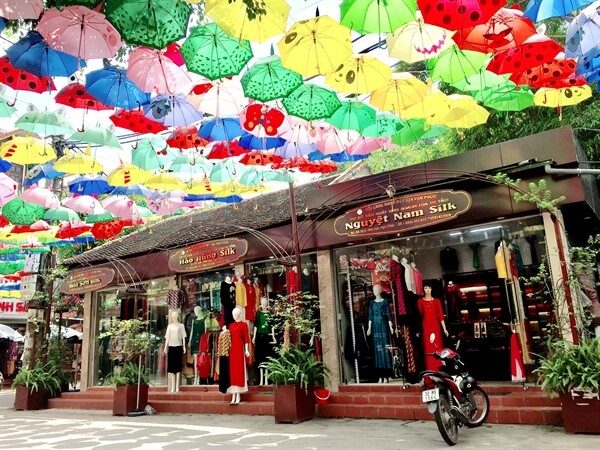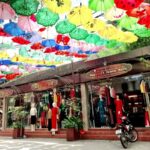According to the Decision, the conservation and development of craft villages play an important role in restructuring rural labor and economics, creating job and improving people’s living standards; protecting and preserving craft village landscape, accelerating industrialization and modernization of the country, building new countryside.
Conservation of cultural values of craft villages should be associated with tourism economic development in order to preserve and promote the traditional cultural identities of different ethnic groups, regions and localities, to arouse potentials, advantages, traditional values bearing local and national brands through the development of products of craft villages, especially products of traditional craft villages and fine handicrafts. In addition, it is necessary to confer, honor and develop the artisans, skilled workers and un-skilled workers in localities, craft villages and traditional craft villages.
Development of craft villages should be associated with the market and international economic integration, boosting exports, in line with the strategy and orientation of sustainable socio-economic development, green growth, and self-contained production model development that helps to save raw materials, protect the environment and adapt to climate change; with applying digital technology in the management, promotion of products of craft villages.

Bat Trang Pottery Village is not only a traditional craft village, but also a destination for many domestic and foreign tourists.
The objective of the Program is to preserve and develop craft villages in order to preserve and promote the traditional cultural values and identities of Vietnamese craft villages, promote production development, and improve competitiveness and added value for craft village products; to create jobs, increase income for people; to protect landscape, space and environment, build residential areas, cultural villages, contributing to promote the sustainable rural socio-economic development.
Specific objectives by 2025: To restore and preserve at least 56 traditional crafts and 85 traditional craft villages at risk of being disappeared or lost; Newly recognize 116 crafts and 40 traditional craft villages, develop 181 craft villages associated with tourism; over 70% of craft villages and traditional craft villages operating effectively; 80% of workers in the craft village trained, retrained to improve their occupational skills, occupational hygiene and safety skills and basic information technology knowledge; at least 50% of traditional craft villages having products classified under the One Commune One Product (OCOP); at least 30% of craft villages having products protected with trademarks; The average growth rate of production value of craft villages about 10%/year; The average income of employees increasing at least 1.5 times compared to 2020; Raise the export turnover of handicrafts of craft villages to about 4 billion USD; 100% of production establishments and households in craft villages meeting regulations on environmental protection.
By 2030, to restore and preserve at least 129 traditional crafts and 208 traditional craft villages at risk of being disappeared or lost; newly recognize 213 crafts and 96 traditional craft villages; develop about 301 craft villages associated with tourism; Over 80% of craft villages and traditional craft villages operating effectively; 100% of workers in the craft village trained, re-trained to improve occupational skills, occupational hygiene and safety skills and basic information technology knowledge; at least 50% of craft villages having products protected with trademarks; The average growth rate of production value of craft villages about 10%/year; increase the export turnover of handicrafts of craft villages to about 6 billion USD.

Van Phuc Silk Village of the capital is an tourist attraction
To achieve the above objectives, the Program offers four key tasks to be performed: Promote the role of artisans and skilled workers; Preserve and develop traditional crafts and traditional craft villages; Promote craft villages associated with tourism and building new rural areas; Develop new craft villages ensuring traditional cultural values, being environmentally friendly and developing sustainably.
Specifically, the Program will develop a plan to restore and preserve traditional crafts and traditional craft villages that are in danger of being disappeared or lost; support traditional crafts and craft villages that have been recognized and are operating effectively for development and replication.
Restore and embellish relics related to traditional occupational values and craft villages (craft-founder ancestral house, craft spaces, landscape of craft villages…); restore and organize folklore festivals and activities, promoting cultural values of craft and craft villages in building a cultural tourism environment; organize value chain linkage, develop craft villages associated with tourism, contributing to rural economic development and new rural construction; develop new craft villages that ensure traditional cultural values, environmentally-friendly and sustainably development.
For villages that already have a professional craft, the program restores and preserves traditional culture in products and craft know-how, and design new products suitable for the market, improve production and consumption capacity and protect the landscape and environment of craft villages.
For villages that do not have a professional craft, to promote the development of production and business industries according to the needs of the market, in accordance with the actual conditions of the locality through the forms of importing, learning, popularizing and replicating models from craft villages and traditional craft villages that are operating effectively, etc.
V.H

